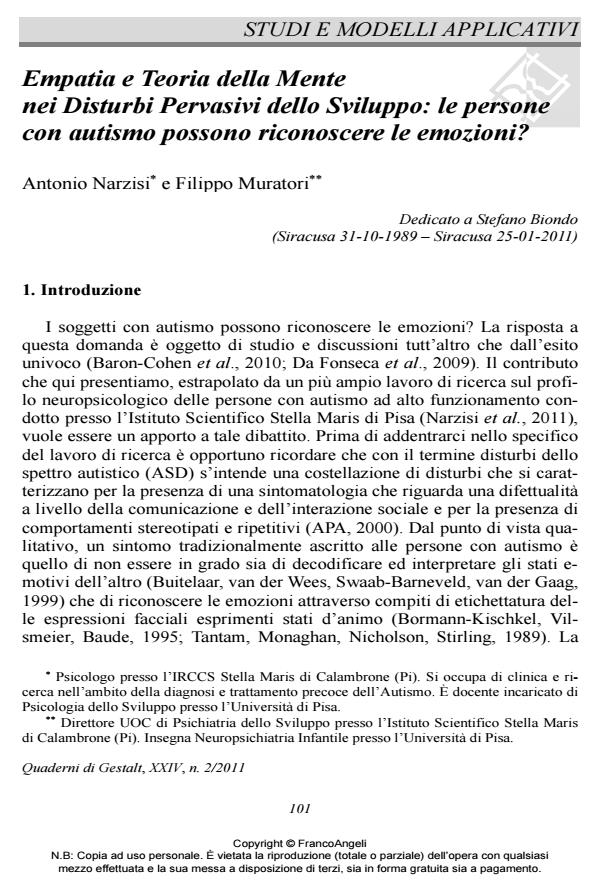Empathy and the theory of mind in developmental pervasive disturbances: can autistic people recognize emotions?
Journal title QUADERNI DI GESTALT
Author/s Antonio Narzisi, Filippo Muratori
Publishing Year 2012 Issue 2011/2
Language Italian Pages 12 P. 101-112 File size 1562 KB
DOI 10.3280/GEST2011-002011
DOI is like a bar code for intellectual property: to have more infomation
click here
Below, you can see the article first page
If you want to buy this article in PDF format, you can do it, following the instructions to buy download credits

FrancoAngeli is member of Publishers International Linking Association, Inc (PILA), a not-for-profit association which run the CrossRef service enabling links to and from online scholarly content.
Can autistic people recognize emotions? This question is the focus of this work. Our findings showed that Theory of Mind difficulties were observed in verbal tasks but not in the understanding of emotional contexts, suggesting that appropriate contextual cues might help emotion understanding in children with Autism. These data have been briefly discussed through the isomorphism’s theory (Gestalt psychology); embodied simulation theory (Gallese); boundary contact theory (Gestalt therapy). Moreover the local information processing for details (systematizing level) is not considered as an obstacle for gestalt information processing and emotional recognition but it could be considered as a sign of neurodiversity.
Keywords: Autism, theory of mind, Gestalt therapy, gestalt psychology, interpersonal isomorphism.
Antonio Narzisi, Filippo Muratori, Empatia e Teoria della Mente nei Disturbi Pervasivi dello Sviluppo: le persone con autismo possono riconoscere le emozioni? in "QUADERNI DI GESTALT" 2/2011, pp 101-112, DOI: 10.3280/GEST2011-002011